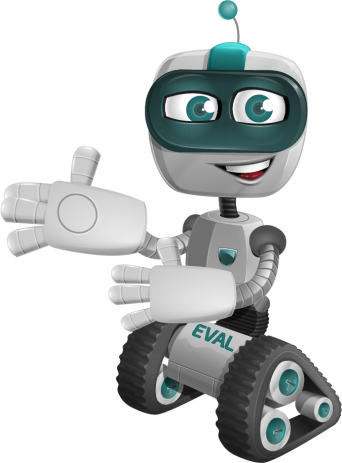Table of Contents
ToggleIntroduction
With Data Privacy becoming central to operations in the digital age, understanding How to conduct a GDPR Data Protection impact assessment is essential for organisations that handle Personal Data. The General Data Protection Regulation [GDPR] mandates this exercise for any data processing activity likely to result in high Risks to individual rights. A Data Protection Impact Assessment [DPIA] helps identify, assess & mitigate those Risks before they occur.
Knowing when & How to conduct a GDPR Data Protection impact assessment is not only a legal obligation but also a practical safeguard to build trust & accountability. This article outlines the key elements of a DPIA & how organisations can integrate it into their operations effectively.
What Is a Data Protection Impact Assessment?
A Data Protection Impact Assessment is a process designed to evaluate & address the Privacy Risks involved in the processing of Personal Data. Under GDPR Article 35, organisations are required to carry out a DPIA whenever processing operations may result in high Risk to the rights & freedoms of individuals. This is especially relevant for technologies involving profiling, surveillance or the large – scale processing of special categories of data.
Unlike general Risk Assessments, a DPIA is narrowly focused on the impact that data handling might have on individual Privacy. It encourages transparency & offers a structured way to ensure that the principles of Data Protection by design & by default are respected from the outset.
Why Is a DPIA Required under GDPR?
The purpose of a DPIA is to ensure that any potential harm to data subjects is identified early & managed appropriately. Rather than waiting for issues to emerge after data has already been processed, a DPIA supports a proactive approach.
It enables organisations to demonstrate Compliance with GDPR while improving internal data Governance. It also acts as a tool for accountability, allowing organisations to justify their decisions about data use with clear records. The European Data Protection Board provides detailed guidance to help organisations determine whether a DPIA is required & How to conduct it effectively.
By ensuring that Risks are systematically identified & mitigated, the DPIA supports ethical decision – making & helps organisations avoid the reputational & Financial damage associated with Privacy violations.
When Must You conduct a DPIA?
Under GDPR, a DPIA becomes mandatory if the processing of Personal Data is likely to result in high Risks to individuals. Scenarios that require a DPIA typically include large – scale processing of Sensitive Data, systematic monitoring of individuals in public spaces, automated decision – making & the use of emerging technologies like Artificial Intelligence.
Determining whether your processing activity meets this threshold can be challenging, but several supervisory authorities such as the UK Information Commissioner’s Office offer practical checklists to support this assessment. It is important to note that the obligation applies regardless of the size of the organisation—what matters is the nature & context of the data processing.
How to conduct a GDPR Data Protection Impact Assessment: Step – by – Step Guide
Understanding How to conduct a GDPR Data Protection impact assessment involves more than just filling out a form. It is a collaborative & iterative process that should be tailored to the nature of each processing activity. The process generally begins with a clear description of the data processing activity. This includes the purpose of the processing, the types of data involved & the individuals affected.
The next step is to assess whether the data processing is necessary & proportionate. This means evaluating if the same goal can be achieved with less intrusive methods & ensuring Compliance with core GDPR principles like data minimisation.
Following this, the organisation must identify the Risks to the rights & freedoms of individuals. These Risks can include data breaches, unauthorised access or the misuse of Personal Data. Based on this Risk Assessment, mitigation measures are defined & documented. These may include Data Encryption, Access Controls or changes in processing workflows.
The DPIA should be documented thoroughly & reviewed periodically. Organisations are encouraged to consult their Data Protection Officer [DPO] or relevant authorities for guidance throughout the process. The European Commission’s official portal provides tools, templates & practical resources for each of these steps.
Who Should Be Involved in a DPIA Process?
Conducting a DPIA is not the responsibility of one person alone. Collaboration is key. The DPO plays a central role in advising on legal requirements & assessing the Risk levels. Input from IT security teams is critical to evaluate technical Vulnerabilities, while legal & Compliance departments ensure alignment with regulatory obligations.
In some cases, involving the people affected by the data processing—data subjects—may also be required, especially when their rights could be significantly impacted. This inclusive approach not only strengthens the DPIA process but also reinforces transparency & trust.
Additional guidance on Stakeholder engagement in DPIAs is available on the CNIL website.
Common Challenges & How to Overcome Them
While the process of conducting a DPIA is straightforward in principle, it often faces practical obstacles. One frequent issue is the ambiguity surrounding what constitutes ‘high Risk’ under GDPR. Organisations can address this by referring to regulatory guidelines & consulting their DPOs.
Another challenge is the lack of internal expertise or resources. Smaller teams may find it difficult to allocate time for a full DPIA. Using pre – existing templates & guidance documents from trusted sources can help reduce the burden.
Resistance from internal Stakeholders may also occur if Privacy assessments are perceived as bureaucratic. Educating teams about the value of a DPIA in preventing data misuse & legal liabilities can improve cooperation & integration.
Tools & Resources for Conducting DPIAs
Numerous free resources are available to help organisations manage DPIAs efficiently. Many Data Protection Authorities offer downloadable checklists & templates. For example, the CNIL DPIA tools provide customisable formats for different types of data processing activities.
Organisations can also explore DPIA automation tools that guide users through each step of the process with pre – defined fields & built – in regulatory references. These tools can save time, ensure consistency & reduce the Risk of errors in documentation.
Access to structured documentation not only aids Compliance but also prepares your organisation in case of audits or regulatory inquiries.
Benefits of Conducting DPIAs Beyond Compliance
While Compliance with GDPR is the main reason for conducting a DPIA, the benefits go far beyond meeting regulatory requirements. DPIAs help foster internal awareness about Data Protection & improve decision – making around data usage.
By embedding Privacy considerations early in a project’s lifecycle, organisations can reduce the Likelihood of breaches, gain Customer Trust & maintain reputational strength. The DPIA also serves as a valuable tool for Internal Audit teams & Risk managers to monitor & control Privacy – related issues.
The discipline & transparency encouraged by DPIAs can significantly contribute to a stronger Data Protection culture within any organisation.
Takeaways
- Understanding How to conduct a GDPR Data Protection impact assessment helps mitigate legal & ethical Risks.
- DPIAs are required for high – Risk data processing activities & must be planned early.
- Key Stakeholders including the DPO, IT teams & legal counsel must be involved.
- Regulatory bodies provide free templates & tools to support the DPIA process.
- A well – executed DPIA improves accountability, trust & long – term operational efficiency.
FAQ
What is the goal of conducting a GDPR Data Protection impact assessment?
The goal is to identify & reduce Data Privacy Risks before processing begins, ensuring Compliance & protecting individual rights.
Who should manage the DPIA within an organisation?
The Data Protection Officer typically advises on the DPIA but management & processing teams must lead the process collaboratively.
Are DPIAs required for all data processing activities?
No, only those likely to result in high Risk to the rights & freedoms of individuals under GDPR need a DPIA.
Can a DPIA be done after processing has started?
Ideally, a DPIA should be done before processing begins, but it can be conducted retrospectively if Risks emerge or operations change.
Do DPIAs need to be submitted to regulators?
Not by default. However, if high Risk remains despite mitigation, consultation with the supervisory authority may be necessary.
How does a DPIA support Data Protection by design?
By assessing Risks early, a DPIA ensures that Data Protection measures are integrated from the start of any project.
Do DPIAs apply to Small Businesses?
Yes, size does not exempt an organisation. If the data processing involves high Risk, a DPIA is still required.
Need help?
Neumetric provides organisations the necessary help to achieve their Cybersecurity, Compliance, Governance, Privacy, Certifications & Pentesting goals.
Organisations & Businesses, specifically those which provide SaaS & AI Solutions, usually need a Cybersecurity Partner for meeting & maintaining the ongoing Security & Privacy needs & requirements of their Clients & Customers.
SOC 2, ISO 27001, ISO 42001, NIST, HIPAA, HECVAT, EU GDPR are some of the Frameworks that are served by Fusion – a centralised, automated, AI – enabled SaaS Solution created & managed by Neumetric.
Reach out to us!





